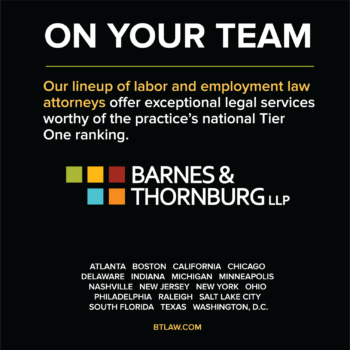Everyone deserves to feel welcome in the workplace. But for people with disabilities, it’s often a rarity to have access to the spaces and tools they need to succeed. Whether it’s a cramped environment that’s not wheelchair accessible or a noisy office that’s distracting for those with sensory processing impairments, a non-inclusive workplace is more common than you’d think — and it goes beyond ramps and parking spaces.
We’re looking forward to hearing more about this topic from renowned speaker Haben Girma at the HR Indiana 2020 Conference. Haben is the first Deafblind person to graduate from Harvard Law School, and she advocates for equal opportunities for people with disabilities.
The SHRM Foundation is committed to making workplaces work for everyone. Read on to learn four ways you can enhance disability inclusion in the workplace.
1. Start a conversation.
Progress starts with awareness, and awareness starts with a conversation. Disability and accessibility can often feel like touchy subjects in the workplace. While it’s normal to want to avoid offending someone, ignoring disability as an off-limits subject can be incredibly harmful.
Be sure to respect everyone’s privacy, but create an environment where everyone feels comfortable discussing their needs and abilities if they choose to do so. Don’t let disability be the elephant in the room — this can lead to individuals with a disability feeling left out or shamed. Instead, encourage open and honest conversation about how everyone can work to make the workplace more inclusive for those with disabilities.
2. Make accommodation the norm.
Starting now, make inclusion a habit. Don’t wait until a team member needs a more accessible desk or you receive a complaint about non-ADA compliant door handles. Especially if your business welcomes guests or potential new employees, basic accessibility shouldn’t require a special request.
In being proactively inclusive, you take the burden off of individuals with disabilities to ask for what they need. This offers privacy and confidentiality for these individuals, and it makes them feel welcome in the workplace without feeling like an afterthought.
3. Act with empathy.
Empathy is all about putting yourself in another’s shoes and then treating them how they’d like to be treated. While people without a disability may never experience the daily inconveniences and disadvantages that people with a disability face, many of us know what it feels like to be in an environment where you’re not set up for success.
Take time to consider what your company can do to help people with a disability do their best possible work. Whether it’s investing in software for the visually or hearing impaired, arranging office furniture in a wheelchair-friendly layout or educating employees about the Americans with Disabilities Act (ADA), it’s every employer’s responsibility to accommodate their workforce’s needs, including those with disabilities. See this as an opportunity to ensure the success of every team member, rather than an obligation or inconvenience.
4. Ensure representation.
Representation is important — you can’t be what you can’t see. That’s why representation of differently-abled individuals is so vital in creating a more inclusive workplace where people of all abilities are welcome. An easy first step is to take a look at company materials like brochures, posters, advertising and signage.
It may be easy to insert basic stock photos of businessmen sitting around a table or team members high-fiving, but taking steps toward inclusivity is simpler than it seems. With free resources like Pexels and Unsplash, you can find professional photography of diverse populations and individuals with a disability. Be aware of the people you’re using as the face of your company — and consider how it could potentially deter people who don’t see themselves on your company’s website, social media or marketing materials.
When all individuals — regardless of differing abilities — feel welcomed and accommodated in the workplace, you’ll benefit from a more positive company culture where everyone has an equal opportunity to succeed.
For more information on creating an inclusive workplace, check out the SHRM Foundation’s Employing Abilities @ Work initiative.






